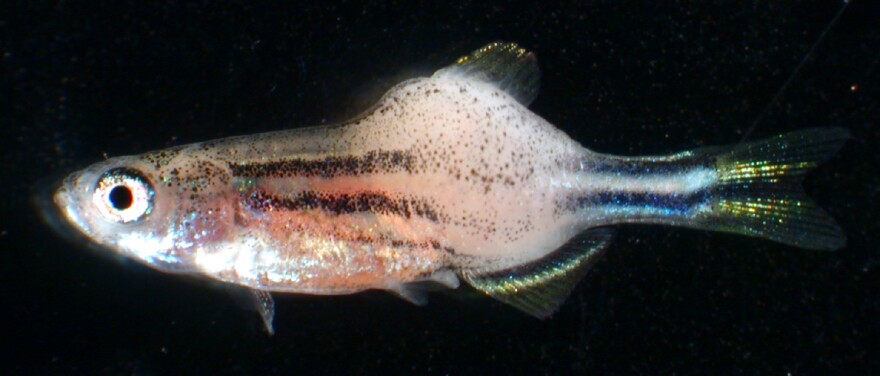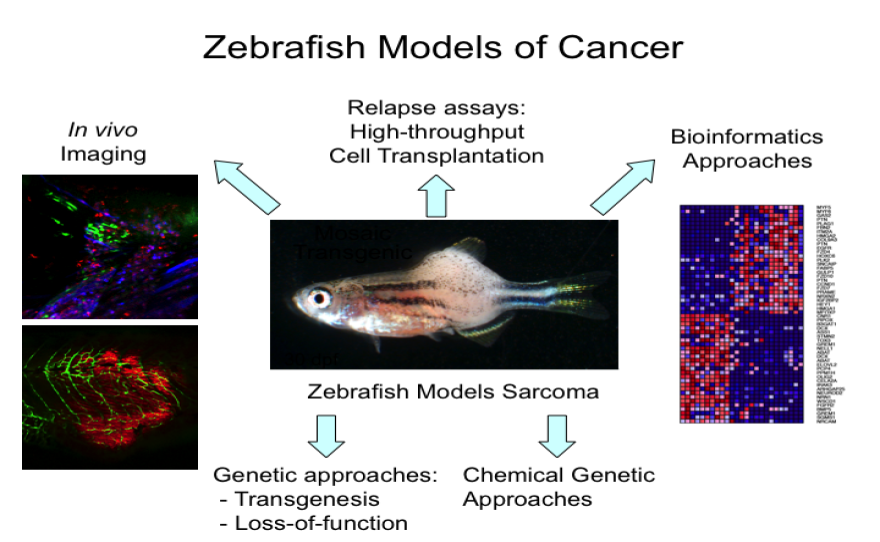The key to finding a better way to treat a deadly form of childhood cancer may lie in a tiny fish. An unlikely animal model at UT Health San Antonio is helping scientists figure out how to tackle muscle tumors.
Inside a fish lab at the Greehey Children’s Cancer Research Institute, rows and rows of glass tanks are full of tiny fish called Danio rerio, better known as zebrafish.

The popular aquarium fish from India is doing more than just swimming in circles.
They serve a higher purpose as a model for cancer researchers.
Fish are cheaper than mice and they don’t take up as much room. Plus, it’s easy to scale up zebrafish. At full strength, this lab can host 15,000 fish. Greater numbers mean more accurate genetic information.

That’s Children’s cancer researcher Myron Ignatius, Ph.D.. He says zebrafish are also effective models because they’re translucent. You can see right through them and watch development, both normal and abnormal.
Using a fluorescent marker, scientists can track the growth of tumors which glow an eerie red, yellow, green, purple. The brightly colored tags help scientists visualize development.
"So you can label a tumor and look at it under a microscope," Ignatius said. "And so this allows you to visualize the tumor in a live animal – how it spreads, how it grows, how it proliferates, how it dies."

All of that in real time. The cancer targeted in this research is called rhabdomyosarcoma. It’s the most common soft tissue cancer, diagnosed in about 500 American children each year.
If tumors come back after initial surgery, the prognosis isn’t good "Primary tumors, 70% of the patients will make it. In relapse tumors, less than 50% of the patients make it," Ignatius explained. "Kids die all the time from relapse. And there is no cure."
The idea is to pinpoint the changes in those secondary tumors that don’t respond to medications. If you can find the point of metamorphosis, perhaps there might be a way to intervene.
One theory is that immature muscle cancer cells go back a developmental step to become stem cells and then spread to form new, more resilient tumors.

"This is a new concept in cancer," Ignatius pointed out.
He said besides tackling tumors, the lessons learned from zebra fish may one day help with other conditions. For instance, he’d like to find a way for patients to regenerate muscle they have lost. That kind of treatment could could have a huge impact on thousands of lives.
84% of genes associated with human disease have a zebrafish counterpart.













